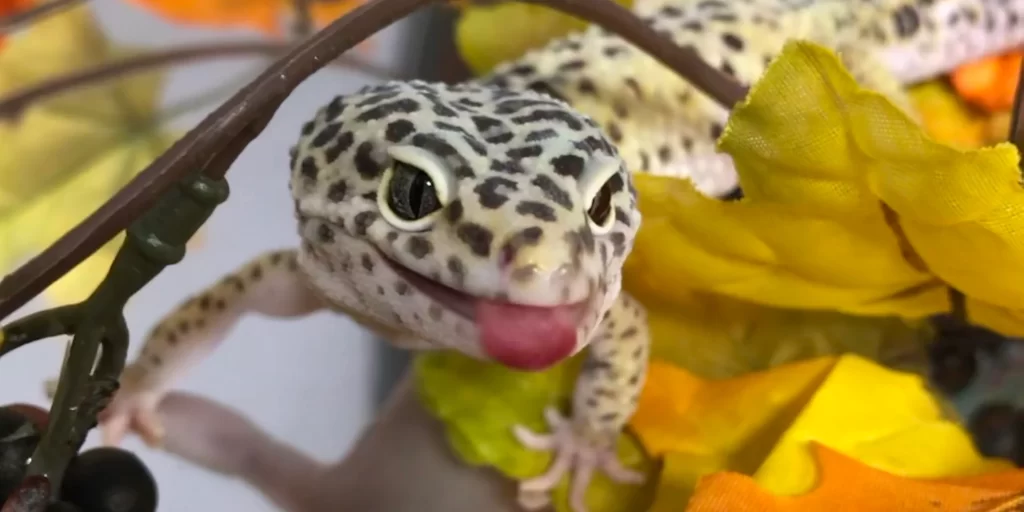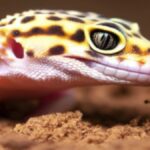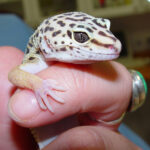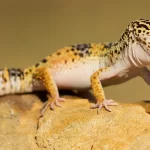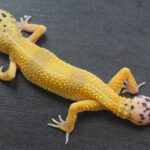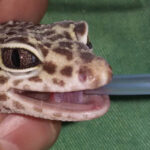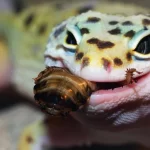Although Leopard geckos are considered docile and calm, biting is seen from time to time. Although Leopard geckos bites are considered rare, these are the important things you should know…
As with any pet, it is important for Leopard gecko owners to know how dangerous their pet(s) might be. It might come as a relief to know that Leopard geckos do not have piercing, sharp teeth and are non-poisonous to humans.
Biting behaviour in Leopard geckos ranges from biting each other to biting people. It is more commonly seen with Leopard geckos that are courting or feeling threatened.
Also see
Breeding behaviour in Leopard geckos 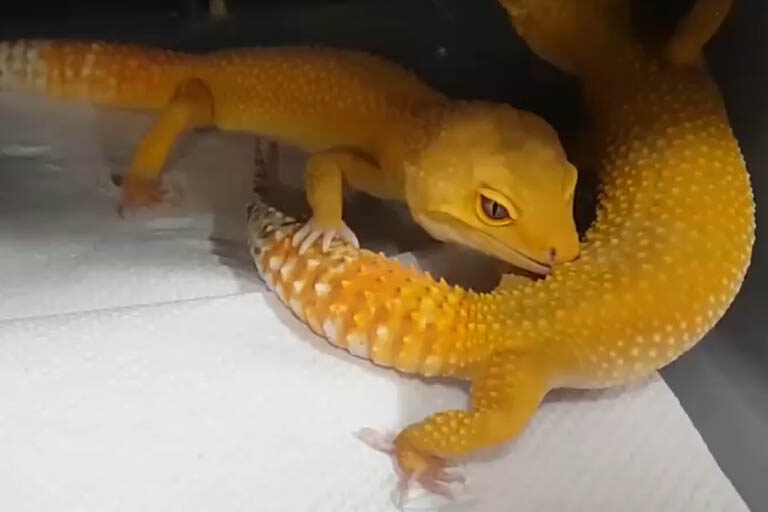
A male Leopard gecko biting a female during courtship. Image 정브르 (CC BY YouTube)
Do Leopard geckos bite?
The short answer is, yes. Although rare, Leopard geckos will bite in certain circumstances. These circumstances include:
Are Leopard gecko bites dangerous?
Although they have relatively strong jaws, a bite from a Leopard gecko will most often lead to a hard pinch-like sensation. The size of a Leopard gecko’s mouth and body makes them fairly weak when it comes to physical danger.
It is important to know that, as with any other pet, the bacteria on the skin and the inside of the mouth of a Leopard gecko can be dangerous to humans. This is especially important to know when blood was drawn from a bite and/or when proper hygiene practices are not followed.
Also see
Good hygiene practices for Leopard geckos
What to do in the case of a Leopard gecko bite wound
As mentioned previously, most bites from a Leopard gecko will be harmless and the skin will be rarely broken. If this is the case, make sure to wash your hands with an appropriate antiseptic soap before you continue doing something else.
In the rare cases where blood is drawn, basic first aid measures should be started as soon as possible:
- Flush the bleeding wound under running water for about 5 minutes. Distilled water is preferable, but potable tap water can also be used. Active bleeding in the very early stages of skin damage will aid in flushing out intruded bacteria.
- If the wound is still bleeding after this time, apply light pressure using clean gauze, cotton wool, towel paper, bandage or a wound band-aid and re-evaluate the wound for bleeding after 5 minutes.
- If the wound has stopped bleeding, apply a commercial antiseptic and cover the wound. The safest is to consult a medical practitioner.
- If the wound has not stopped bleeding, consult a medical practitioner as soon as possible.
Practical tips related to Leopard gecko bites
To prevent children from being bitten by a Leopard gecko, parents should supervise their interactions. It is advised that only responsible children are allowed to handle Leopard geckos.
Skittish baby and juvenile Leopard geckos are more likely to bite when scared, startled or spooked. Some Leopard geckos will feel threatened while they are in the process of shedding their skins. Rectifiable factors that can make a Leopard gecko bite include inadequate hiding areas and too large (or too many) live food items.
Warning will often be in the form of barking and snapping. The typical threatened/threatening posture is when the head is held up high, the body is lifted high from the ground, the mouth is open and the body is inflated. Some geckos might try to escape in the process. In addition to this, aggressive adults will often raise and wave their tail before biting.
Try to minimise fast movements and handling as much as possible during the first couple of months and/or until the Leopard gecko is observed as being content and docile. Also try not to interfere or get your hands nearby threatening individuals, during the breeding season, during courting or during feeding.
Leopard geckos 101 is a free, informative website helping to improve the quality of pet Leopard geckos. If you found value in any of its content, please consider making a donation. Also see the other ways to support Leopard geckos 101.
Please help other Leopard gecko owners by using the buttons below to share this article on your favourite social media platform…
Previous behaviour articles

